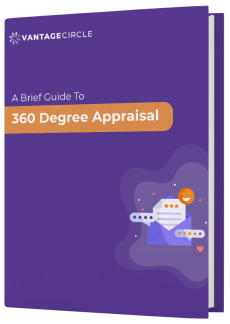What Managers can do to Tackle Poor Employee Performance

Addressing poor employee performance has always been challenging, uncomfortable, and awkward at the same time. It is a situation that a manager has to face at some point in their career.
But what is the exact definition of poor performance?
Well, for different organizations, the meaning may vary. But the core definition includes not meeting deadlines, lack of discipline, falling short of expectations, and much more. These, in short, are the indications which the managers can use to identify the poor performers.
Once the problem is recognized, it’s essential that a manager addresses it and finds a possible solution.
In this article, we will be discussing what a manager can do to tackle the employee’s poor performance.
Causes of Poor Performance
-
Lack of Motivation- One of the prime reasons employees do not perform well is their lack of motivation to do their job. There might be many factors like less recognition, not in the proper role, burnouts, and much more.
-
Limited Training- Employees might not be getting the necessary training and developmental opportunities to enhance their skill level. Thus, disrupting their performance.
-
Absence of Guidance- Lack of a proper leader who can guide the employees with their work might be another factor that adds to their drop in performance.
-
Personal Reasons- Employees might be facing emotional issues, which can be pretty draining. This takes a toll and eventually affects their performance in the long run.
What can Managers do to tackle poor performance?
Whatever the situation you are dealing with an employee, trying to solve their problems is always the first step. Here are a few steps you can take and put into action.
1. One-on-one Meetings
One of the best ways to approach poor performance is by conducting one-on-one meetings. It is a more personal way to communicate with your employees and get to know them better. Keep in mind that it should be a two-way conversation, and both parties listen to each other.
To make fruitful one-on-one conversations, always-
-
An active listener
-
Keep notes of all the critical points
-
Be open-minded
-
Make it more about the employees.
The more the employees put forward their issues, the better it will be for you to work on them swiftly.
2. Figure out the root of the problem
To solve the poor performance of your employees, you first need to understand the root of the problem. Ask the right questions rather than drifting away from the main issue.
The questions can include-
-
What do you think is hindering the performance?
-
Has there been any lack of tools that you may need for your daily tasks?
-
Does the organization need more refined developmental programs?
-
Is the job a right fit for you?
-
Are you facing any personal disturbances lately?
These are a few of the questions you can refer to, or you can come up with your own set of questions. But, do keep in mind that those questions need to be employee-centric and should not hurt their sentiments.
Try to be more friendly rather than being the manager and focus on the specifics. This will bring out the whole picture, and you will figure out the issues.
3. Approach with Empathy
Dealing with poor performances can be annoying and frustrating for a manager. But this is where your patience and leadership come into play. Please do not give your underperforming employees negative vibes or be harsh with them. It may close the window of them opening up with their issues.
Try to project positivity and make them feel comfortable, which will give you an upper hand in the situation. Understand their perspective and come up with the best possible solutions which fit them the best.
Connect with them emotionally, which helps in effective mentoring and improves their overall experience within the organization. Be the leader your employees want you to be and help them out whenever they need it.
4. Never forget to Recognize
Recognition has always proved to be a vital part of an organization when improving employee performance. And to keep the performance graph stable, recognition is critical.
Your employees put in a significant amount of effort to complete their daily tasks. And with successful completion of each job, take some time out to recognize them and elevate their morals. Show them that the organization cares for them, and the company culture promotes recognition in every step. Do keep in mind that there should not be room for biases when it comes to recognition. It hinders the productivity of the workforce in the long run.
5. Giving them the right job with appropriate goals
For your employees to perform better, it is essential that you have the right job for them. If you tend to use their skill and talent in a job that is not the right fit, it will hamper their morale, and there will be a waste of human resources in the workforce. Try to avoid such circumstances and assess your employees before giving them a specific task.
Another crucial factor in enhancing employee performance is by setting realistic goals that they can achieve. Set goals that align with their development and that helps in their career growth. Doing this will boost productivity, but it will also help improve their performance as they will be more focused on developing themselves.
Summing it Up
We all know how difficult it can be to motivate employees to perform better. However, suppose you have the patience and the right attitude. In that case, you can help your employees in a better way and understand their difficulties.
I hope the solutions mentioned above help you out to enhance your employees’ performance. You can also develop your own set of ideas to tackle such a rising issue and make the organization a better place to work for.

Vantage Circle is a simple AI-powered Rewards & Recognition Platform for upgrading your employee experience and engagement for better productivity.




